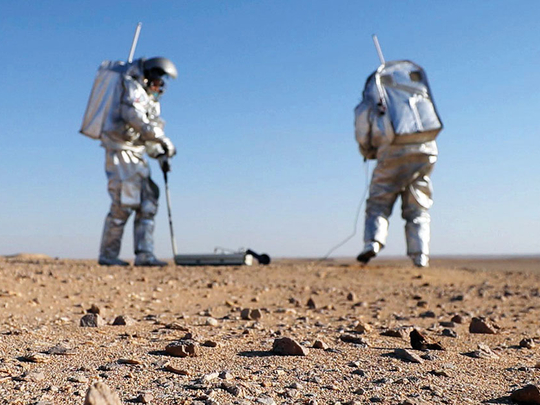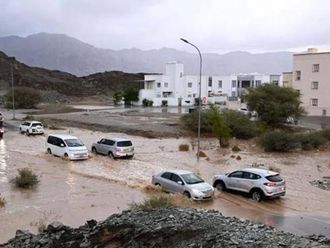
Muscat:
The Mars Analog Mission team on Wednesday headed to the Marmul desert in the Dhofar governorate in southern Oman to launch AMADEE-18, a satellite simulation project.
Hosted by Oman, the project is one of the country’s contributions to space research and scientific exploration. It is aimed at raising the level of technological readiness and developing systems that support the lives of astronauts. Osama Al Busaidi, Deputy Chairman of the Oman Astronomical Society, told Oman News Agency (ONA) the first stage of the project, which began on January 31 will continue until February 8. The 16-member crew includes people from France, Germany, Spain, the Netherlands, Portugal and the Sultanate, represented by Al Busaidi.
“It is the open period during for invited guests, interested parties, journalists and media representatives from within Oman and outside,” Al Busaidi said.
After the first stage, from February 9 to March 1, the crew will be in complete isolation but will be closely monitored.
Al Busaidi said 19 simulation experimentswill be conducted, including the testing spacecraft’ and robots’ ability to collect samples; their movements on a similar surface; and their ability to send the collected information to the information centre, which will be located in Austria.
Some experiments will be shown live on social networking sites, he noted.
AMADEE-18 is the most courageous experiment related to Mars, preceded by experiments on the surface of a frozen glacier in the Alps, one in an open cave in southern Spain, and yet another in the Moroccan desert.
Dr. Gernot Gromer, president of the Austrian Space Forum, said Oman being the destination for conducting experiments to simulate living on the Red Planet include not only its geological and topographic conditions, but also its high level of political security.
“It provides a comfortable and easy atmosphere for the crew. [The project] will put Oman on the map of space research,” he said.
The total cost of the project is expected to be around 500,000 euros (Dh2.29 million), covered mainly by private donations from industry partners.
Critics of such space missions see the massive amounts of money as a luxury at a time of austerity measures in Europe and depressed oil prices in the Gulf.
The Austrian Space Forum argues the money is not being “thrown into space”, and that the tools being developed are not only useful for life on a distant planet but also for our own.
“Most people every day use a handful of space technologies without even knowing it,” said Groemer, listing satellite imagery, fuel injection for cars, and breast cancer screening software as examples.
For the Omani Astronomical Society, which invited the Austrian Space Forum, the mission is a way to inspire the country’s youth.
A series of lectures took place at Sultan Qaboos Grand Mosque in Muscat, geared especially towards hundreds of young students.
Al Khattab Ghalib Al Hinai, deputy head of the steering committee for AMADEE-18 and vice chairman of Oman’s State Council, earlier said a high school team will even participate, conducting a geophysics experiment to find water.
“The whole idea is to ignite the imagination of the youth in Oman, both female and male, and I hope this journey of discovery will help them to always search for the unknown,” Al Hinai, a geologist, said.
“I hope to see astrophysicists in Oman, I hope to see geologists. I hope to see astronauts in the future.”
-With inputs from AFP.











